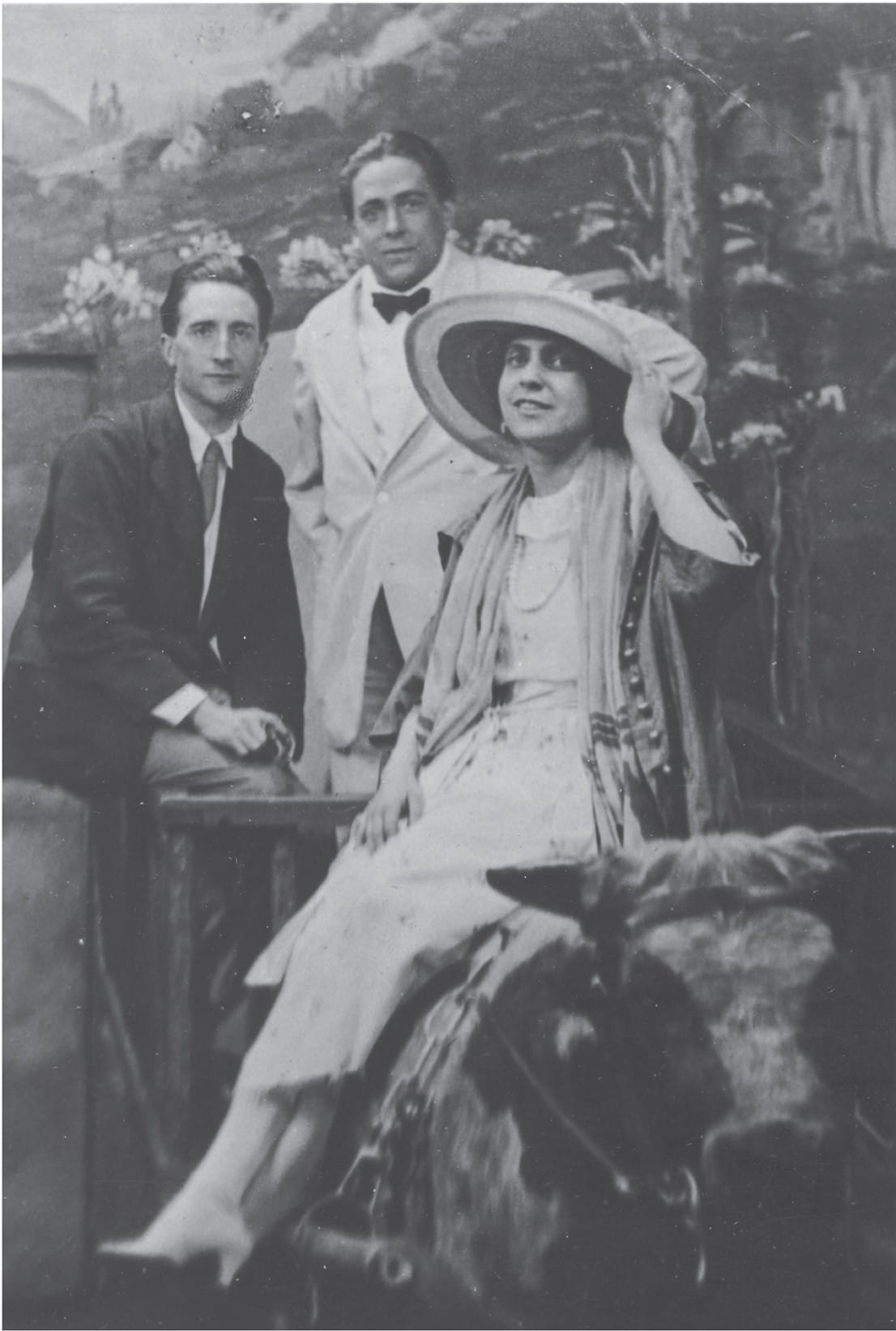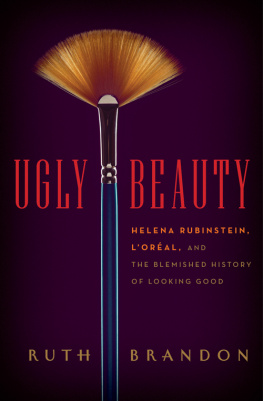Ruth Brandon - Spellbound by Marcel: Duchamp, Love, and Art
Here you can read online Ruth Brandon - Spellbound by Marcel: Duchamp, Love, and Art full text of the book (entire story) in english for free. Download pdf and epub, get meaning, cover and reviews about this ebook. year: 2022, publisher: Pegasus Books, genre: Non-fiction. Description of the work, (preface) as well as reviews are available. Best literature library LitArk.com created for fans of good reading and offers a wide selection of genres:
Romance novel
Science fiction
Adventure
Detective
Science
History
Home and family
Prose
Art
Politics
Computer
Non-fiction
Religion
Business
Children
Humor
Choose a favorite category and find really read worthwhile books. Enjoy immersion in the world of imagination, feel the emotions of the characters or learn something new for yourself, make an fascinating discovery.
- Book:Spellbound by Marcel: Duchamp, Love, and Art
- Author:
- Publisher:Pegasus Books
- Genre:
- Year:2022
- Rating:4 / 5
- Favourites:Add to favourites
- Your mark:
- 80
- 1
- 2
- 3
- 4
- 5
Spellbound by Marcel: Duchamp, Love, and Art: summary, description and annotation
We offer to read an annotation, description, summary or preface (depends on what the author of the book "Spellbound by Marcel: Duchamp, Love, and Art" wrote himself). If you haven't found the necessary information about the book — write in the comments, we will try to find it.
Ruth Brandon: author's other books
Who wrote Spellbound by Marcel: Duchamp, Love, and Art? Find out the surname, the name of the author of the book and a list of all author's works by series.
Spellbound by Marcel: Duchamp, Love, and Art — read online for free the complete book (whole text) full work
Below is the text of the book, divided by pages. System saving the place of the last page read, allows you to conveniently read the book "Spellbound by Marcel: Duchamp, Love, and Art" online for free, without having to search again every time where you left off. Put a bookmark, and you can go to the page where you finished reading at any time.
Font size:
Interval:
Bookmark:

Spellbound by Marcel
Duchamp, Love, and Art
Ruth Brandon


To Phil, who first introduced me to Duchamps strange world
Marcel Duchamp: French artist, the originator of conceptual art
Beatrice Wood: American would-be artist, later a successful ceramicist
Henri-Pierre Roch, aka Pierre: French artistic hanger-on and compulsive womanizer, later the author of Jules et Jim
Walter Arensberg: Collector of modern art
Louise Arensberg: His wife
Marcels Brothers and Sisters
Gaston, aka Jacques Villon: Painter and cartoonist
Raymond, aka Raymond Duchamp-Villon: Sculptor
Suzanne: Artist
Yvonne
Madeleine
Marcels Paris Friends
Guillaume Apollinaire: Poet
Francis Picabia: Playboy, artist
Gabrile Picabia: His wife
Beatrices New York Friends
Beth Reynolds, later Hapgood: School friend, Russian linguist
Norman Hapgood: Magazine editor
Charles Coburn: Theatrical impresario
Ivah Coburn: His wife, theatrical producer
Alissa Franc: Journalist
Madame Yorska: Director, French American Theater
The Arensberg Circle: Americans
Walter Pach: Artist, organizer of the Armory Show
Allen Norton: Poet, editor of Rogue magazine
Louise Norton: His wife, later the wife of Edgard Varse
Joseph Stella: Italian doctor, New York artist
William Carlos Williams: Doctor, poet
Mina Loy: Poet
Arthur Cravan: Poetic beefcake
Man Ray: Photographer
The Arensberg Circle, French
Francis Picabia
Gabrile Picabia
Edgard Varse: Composer
Jean Crotti: Ex-husband of Yvonne Chastel, later husband of Suzanne Duchamp
Henri-Pierre Roch
Marcels Wealthy Middle-Aged Lady Friends
Ettie Stettheimer
Florine Stettheimer: Painter
Carrie Stettheimer
Katherine Dreier
In Canada
Paul Ranson: Bigamous husband to Beatrice
Marcels Women, Buenos Aires and Paris
Yvonne Chastel: His lover in Buenos Aires and Paris
Mary Reynolds: His longtime lover, Paris
Lydie Sarazin Levassor: His first wife, Paris
Maria Martins: Brazilian sculptor and diplomatic hostess, with whom he falls blindly in love
Teeny Matisse: His second wife
T his is a story about war, love, memory, fame, art, and the endless conflict between those who want to shape the future and those who would prefer to keep it at bay. The action takes place in New York and Paris: the New York of the Arensberg salon, and the American Paris of Gertrude Stein, Janet Flanner, and Man Ray. The pivotal moment was World War I, which both destroyed an old way of life and opened the doors to a new one, in which people felt free to follow their inclinations untrammeled by social conventions they now perceived as useless.
In 191516 a group of French artists fled war-torn Europe for New York. In the few months between their arrival and Americas entry into the war in April 1917, they pushed back the boundaries of the possible, in both life and art. The hub of this transformation was the apartment at 33 West 67th Street owned by Walter and Louise Arensberg, where artists and poets from both sides of the Atlantic met nightly to talk, eat, drink, discuss each others work, play chess, plan balls, organize magazines and exhibitions, and fall in and out of love. None of the participants ever again experienced so thrilling a moment.
At the center of all this activity stood the mysterious figure of Marcel Duchamp, always approachable, always unreadable. Many people, of both sexes, were in love with him, but although he was blithely friendly to them all, his own feelings, if any, remained opaque. Decades later, when Duchamp became famous for the second time and was reincarnated as the twentieth centurys most influential artist, anyone still living who had been present during those all-consuming months was avidly sought out. Most of their accounts, however, were more a study of memorys vagaries than an accurate record of what actually happened.
Henri-Pierre Roch and Beatrice Wood were both in love with Duchamp, and briefly, and (for her) life-changingly, with each other. Both kept daily diaries, which along with other contemporary writings give a picture of events very different from what they later remembered. Or rather two picturesfor the views they offer, including of their own love affair, are stunningly divergent.
Rochs reminiscences of the Arensberg years are contained in a novel Victor, unpublished because it was still unfinished when he died in 1959; Beatrices form part of a memoir, I Shock Myself, published in 1985 when she was ninety-two. When put side by side with the contemporary accounts it becomes clear that both these books often misrepresent both the sequence of events and how people felt at the time. What they do reveal is how the writers prefer to remember what happened. So in Victor the Beatrice character is called Patricia, which was the name of her doga detail that says quite a lot about Rochs post-hoc diminution of her importance to him; while Beatrice, in her memoir, says she met Duchamp after Roch, and that he (Duchamp) was in love with her, when in fact she was madly in love with Duchamp, who introduced her to Roch in hopes that she might find another object for her romantic yearnings. In I Shock Myself this is rendered thus: Marcel knew I was in love with his good friend Roch and did not approach me amorously. Secretly I wished he would. My love for Roch could not keep me from being a little in love with Marcel.
Duchamp, too, left a contemporary record of his life in the shape of the artworks he produced. They obviously reflect the frame of mind in which he made them, but as they are also, like their maker, open to infinite interpretation, he remains an enigma. He never wrote any autobiographical account of any aspect of his life, and often said different things to different people. The principle he applied to all his works, however, was that any and every interpretation was correct. And if, as Roch remarked to Franois Truffaut, Duchamps greatest work was his lifea verdict with which Duchamp himself heartily agreedall his accounts should perhaps be taken as correct. Truth takes many forms, and Duchampian truth embraces most of them.
- . Truffaut, introduction to Roch, Carnets, les annes Jules et Jim.
I n 1912 Walter and Lou Arensberg bought Shady Hill, the enormous house in Cambridge, Massachusetts, that had previously belonged to Charles Eliot Norton, Americas leading man of letters.
The Arensbergs were in their early thirties. They had been married five years, and were living in Pittsburgh, where Walters father was president and part owner of a crucible steel company. Lou, ne Stevens, the sister of one of Walters Harvard classmates, was even wealthier: her family owned one of the largest and oldest-established textile mills in Massachusetts.
Neither Walter nor Lou wanted to stay in Pittsburgh. Lou missed her family, while Walter was still much involved with his alma mater and the East Coasts intellectual life. He published poems and translations in Harvard Monthly, which he had once edited, and described himself to the
Font size:
Interval:
Bookmark:
Similar books «Spellbound by Marcel: Duchamp, Love, and Art»
Look at similar books to Spellbound by Marcel: Duchamp, Love, and Art. We have selected literature similar in name and meaning in the hope of providing readers with more options to find new, interesting, not yet read works.
Discussion, reviews of the book Spellbound by Marcel: Duchamp, Love, and Art and just readers' own opinions. Leave your comments, write what you think about the work, its meaning or the main characters. Specify what exactly you liked and what you didn't like, and why you think so.












